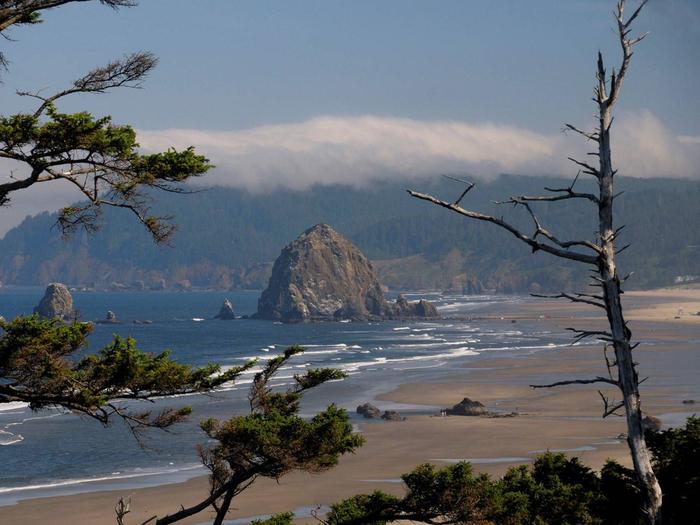Oregon Islands National Wildlife Refuge
Fish and Wildlife Service, Oregon.
From nearly every viewpoint on the Oregon coast, colossal rocks can be seen jutting out of the Pacific Ocean, stark monoliths amidst a pounding surf. Established on May 6, 1935, as a sanctuary and breeding ground for seabirds and marine mammals, the scenic and rugged Oregon Islands NWR includes 1,853 rocks, reefs, and islands and stretches from Tillamook Head near Seaside south to the California border. All of the rocks and islands of the Refuge are designated National Wilderness Areas, with the exception of 1-acre Tillamook Rock. Most of Oregon’s estimated 1.2 million nesting seabirds use Oregon Islands Refuge as a place to raise their young, and Oregon’s seals and sea lions use the islands as a place to haul out and rest or to give birth to their pups.
Oregon Islands Wilderness area was designated by congress by Public Law 91-504 on October 23, 1970. Additional lands were added to the Oregon Islands Wilderness in 1978 and 1996. All of the off shore portions of the Oregon Islands NWR are designated as wilderness, comprising a total of 593.1 acres. The Wilderness Act of 1964 created the National Wilderness Preservation System "in order to assure that an increasing population, accompanied by expanding settlement and growing mechanization, does not occupy and modify all areas in the United States, and its possession, leaving no lands designated for preservation and protection in their natural condition..." The Oregon Islands Wilderness protects millions of seabirds from human disturbance and development that could harm this crucial nesting habitat.
For more information about Oregon Islands Wilderness, visit Wilderness.net.
Nearby Activities
- Hiking
- Motor Boat
- Photography
- Wildlife Viewing
Directions
Coquille Point, a mainland unit of Oregon Islands Refuge, is located just west of downtown Bandon. This area provides a fully accessible and panel-interpreted quarter-mile trail with fabulous coastal views. To get to Coquille Point turn west off of Highway 101 onto 11th Street and drive to the ocean.

